Microsoft's Windows 10X: A dozen ways it's cooler than just two screens
- 12 February, 2020 22:30
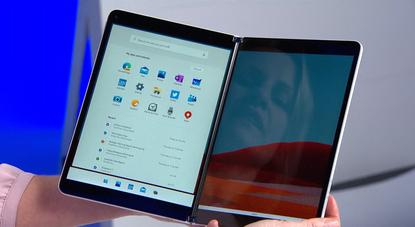
Before Tuesday, all we really knew about Windows 10X was that it would be some flavor of Windows 10, optimized for dual-screen devices such as Microsoft’s own Surface Neo and an unknown number of third-party competitors by holiday 2020. Now we know much more, including what’s under the hood.
At a developer event Tuesday, the company made a Windows 10X emulator available—though you’ll need to assign a fairly powerful PC to the task, and dedicate it to the Windows Insider program. Microsoft revealed several intriguing characteristics of the new OS as well, including lightning-fast updates, a special way of handling Win32 apps, and no apparent need for anti-malware apps.
Some have characterized Windows 10X as a new Windows 10 “experience,” in much the same way a movie might be re-released in a special director’s cut, with extras and in additional formats. But it’s more than that, as it will interact with files and other applications differently than Windows 10 does. Microsoft’s published enough separate documentation for us to start piecing together how Windows 10X will work. Here are a dozen intriguing features we’ve already learned about.
A simplified, prettier Windows shell
Windows 10X looks different. Most of what you expect about Windows still works—various inputs, drag and drop, the Clipboard, and more. But in Windows 10X, there’s a small dock that incorporates elements of the traditional Windows taskbar, as well as the “app drawer” on smartphones. The Windows Start launcher moves from the bottom lefthand corner of the screen toward the center. The way app icons are aligned on the screen looks more like what you’d see on a traditional tablet or phone than the Windows desktop. Even apps are moved from one screen to the other via touch points on the bottom of the window, not the top.
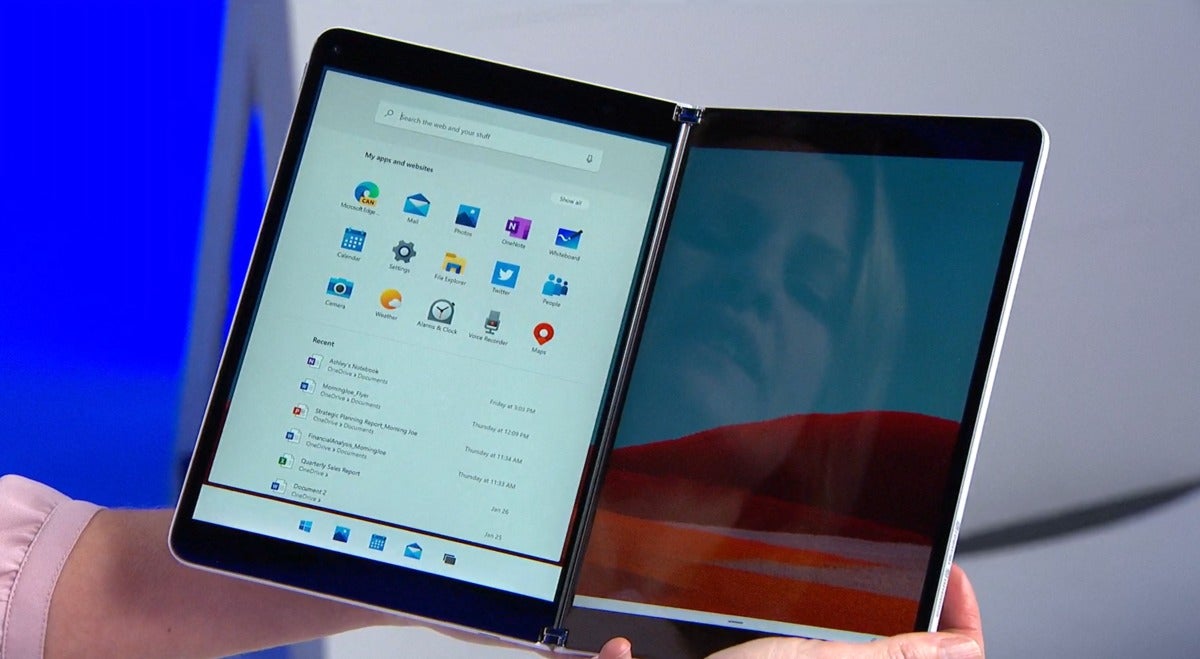 Microsoft
Microsoft
Microsoft’s Windows 10X: the same, but different.
Windows 10's tiled Start interface? That's gone, too. Everything within Windows 10X looks simple and clean.
Windows 10X understands what the hardware is doing
Microsoft expended quite a lot of effort hammering home why dual-screen devices are cool, both from a developer and user perspective. Two displays—though separated by a physical hinge—offer a variety of ways of communicating information. But there’s two separate aspects, including the hardware and the software.
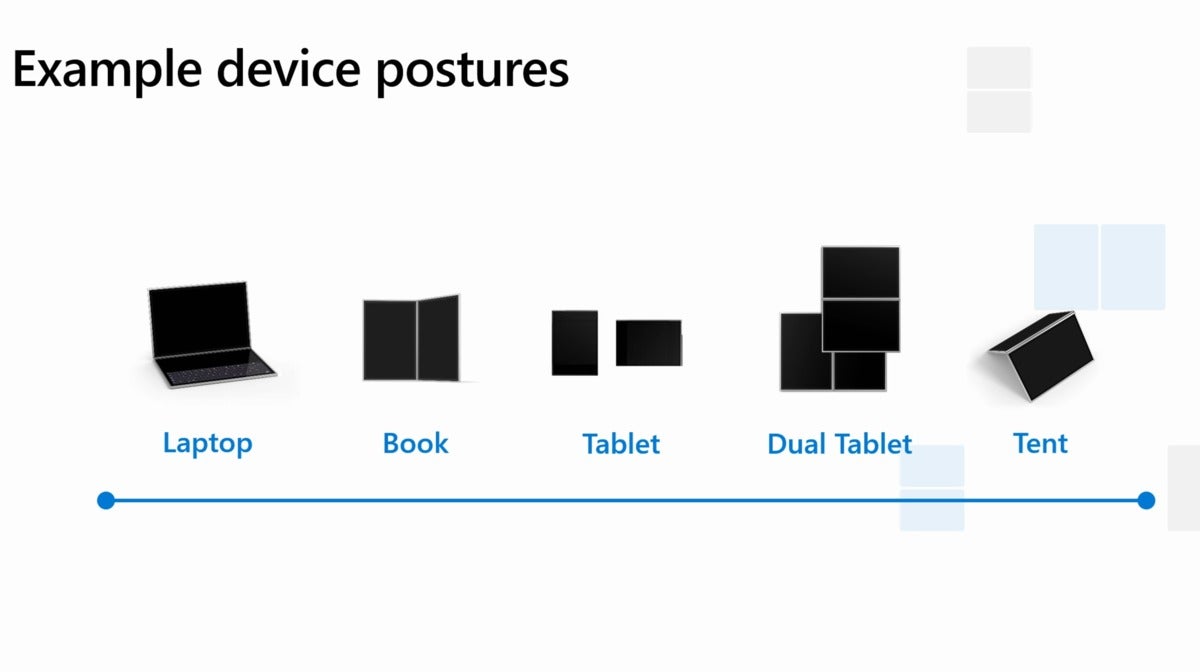 Microsoft
Microsoft
The different hardware “postures” for Microsoft’s Windows 10X, specifically the Surface Neo.
Microsoft envisions five separate hardware modes: laptop, book, tablet, dual tablet, and tent. The three most interesting include tablet mode, where the rear display folds back out of sight and shuts off, to save on power and mistaken input. Tent mode, as with currently available 360-degree convertible laptops, is optimized for presentations. Last but not least, the Surface Neo’s keyboard flops up to cover part of the screen, creating what Microsoft calls...
The Wonder Bar: A Touch Bar that makes sense
When the Surface Neo’s keyboard is attached to the device, a small strip of space is left uncovered. That’s what Microsoft calls the Wonder Bar, a space for additional content, suggested emoticons or GIFs, or whatever.
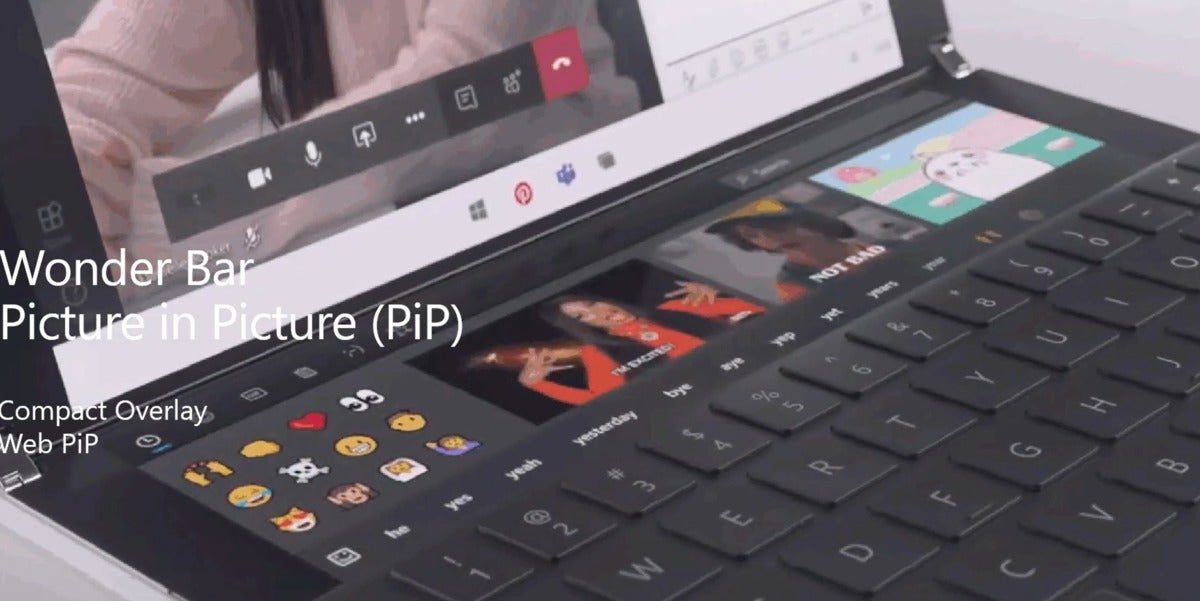 Microsoft
Microsoft
Microsoft’s Wonder Bar and Windows 10X makes good use of the extra space when the Surface Neo’s keyboard is folded over.
Looks like the MacBook Pro’s Touch Bar, you might sniff. But the Wonder Bar is inarguably better: bigger, so it can show more, and it also does more, In this picture, posted during Microsoft’s Windows 10X developer presentations, you can see Microsoft’s keyboard suggestions—a fantastic use of the technology. Auto-completing text suggestions are an integral part of smartphones, but they feel useless in Windows. (Try them yourself in Settings > Devices > Typing > Show text suggestions as I type.) By placing them right above the keyboard, you can quickly reach out and tap them, then return to typing.
Smart software spreads content across screens
Anyone who’s worked with multiple displays understands the benefits of seeing more information at any given time. Windows 10X does this in three ways: allowing apps to open in what’s known as “expansive workspaces,” spanning apps across dual screens; “focused screens,” which puts separate apps on each individual screen, and “connected apps,” which puts separate apps on either screen but lets them talk with one another.
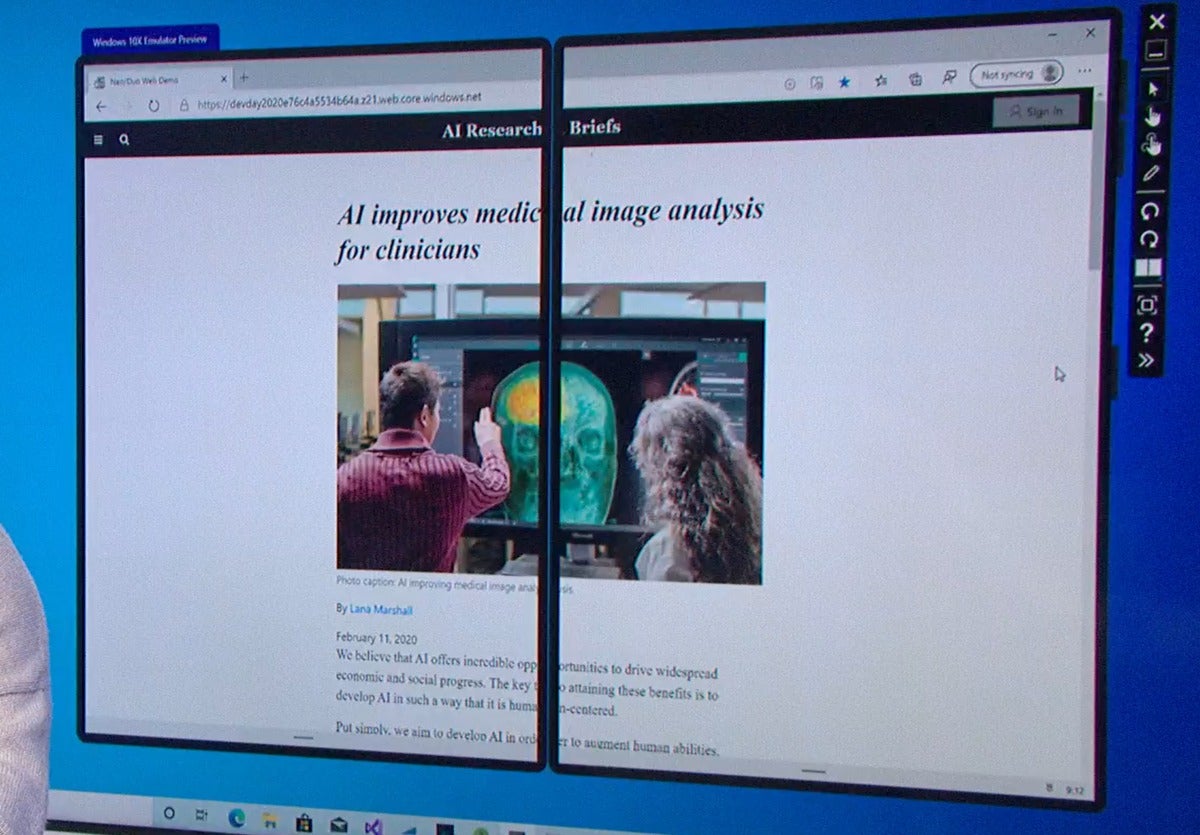 Microsoft
Microsoft
Spanning content within Windows 10X doesn’t look that hot...
There already appear to be pluses and minuses to this approach. Spanning a webpage across both screens—with a gap in the middle—looks a bit awkward when the gap splits a page vertically. But Microsoft’s right in suggesting that if we’re reading email on one pane, we might want to open a Calendar app in a second pane.
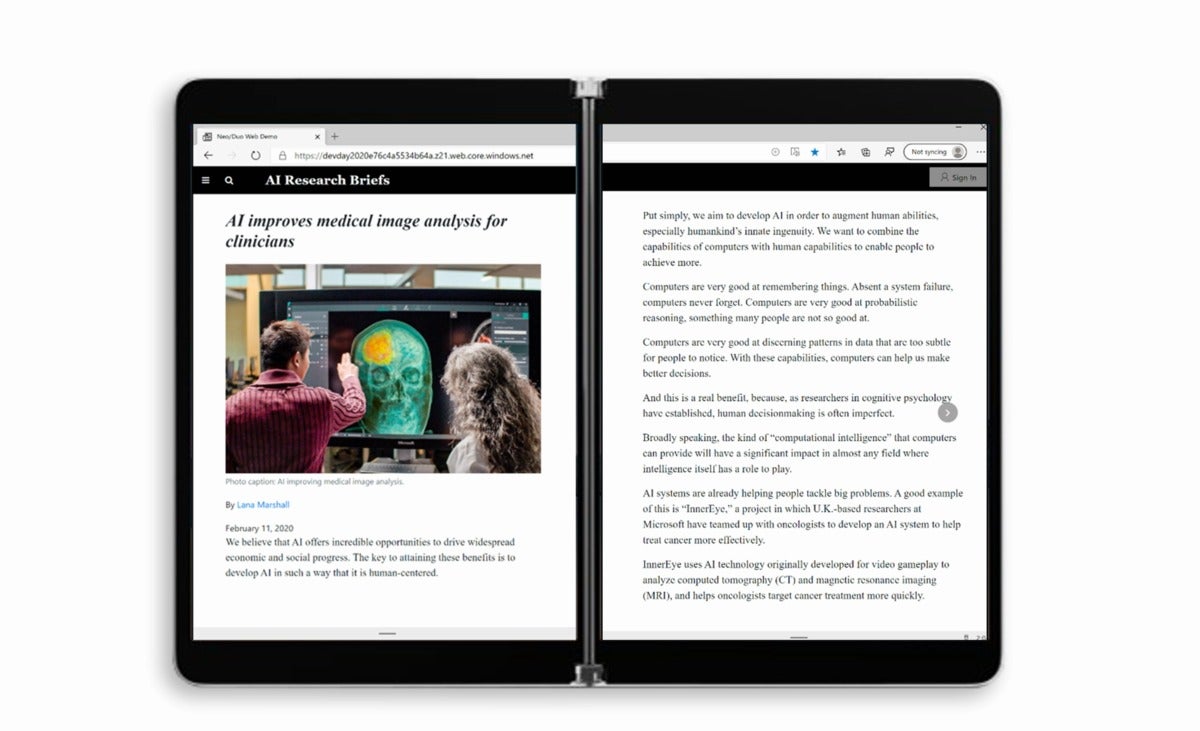 Microsoft
Microsoft
...but it makes a bit more sense like this.
According to Kevin Gallo, corporate vice president of the Windows Developer Platform, apps will open in a single display by default. Searching for a restaurant in Edge, for example, will open the browser in one pane. Tapping a map of the area will open the Maps app in a second pane, while leaving the first open. This makes sense.
Windows 10X is read-only
The core Windows 10X operating system is designed in a locked-down mode, so that only trusted apps are able to run in the operating system. You’ve heard this before—that’s the same model for Windows 10 S. (But wait! Legacy Win32 apps are supported, and we’ll explain how in a bit.) What’s different is that Windows 10X also runs signed code and apps with a “good reputation,” including those published in the MSIX container, widening the available apps beyond just the traditional UWP apps, such as Mail and Calendar.
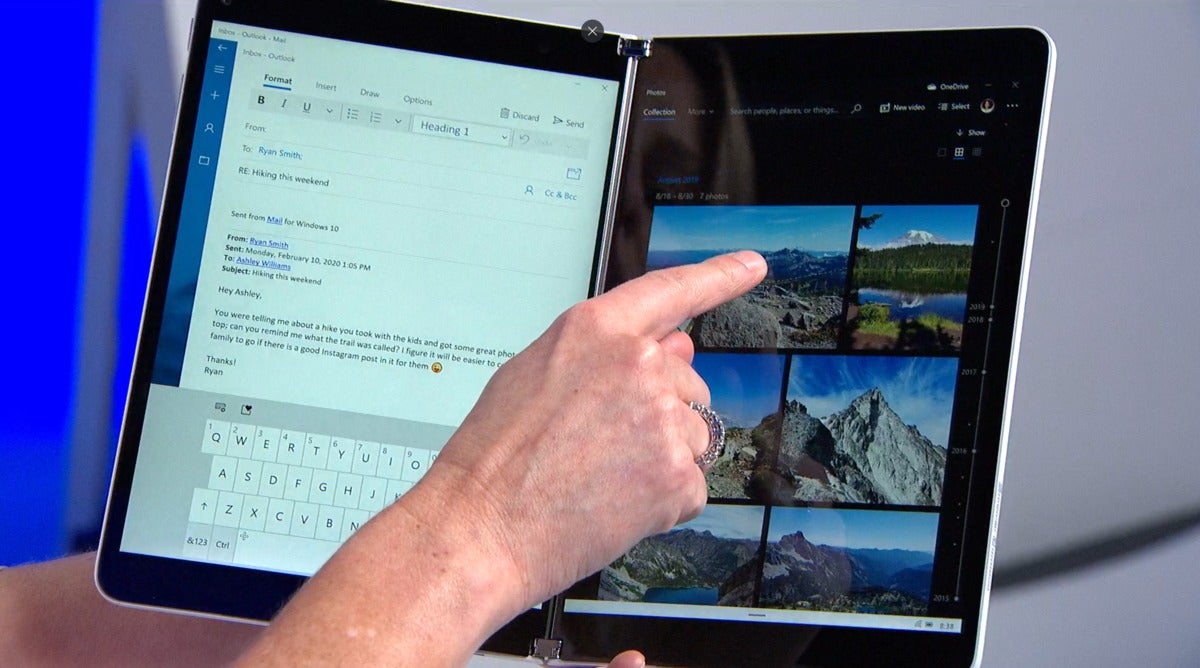 Microsoft
Microsoft
Windows apps like Photos will be the most commonly used within Windows 10X, certainly.
That doesn’t mean that apps will have to be downloaded from the Microsoft Store app, either. As long as the app is trusted, it can be downloaded from a website, USB key, or another location. That’s a big change from Windows 10 S.
All this is going to have interesting follow-on effects, including:
Windows 10X won’t require anti-malware
As with Windows 10 S, Microsoft believes that relying on signed and trusted applications will remove the need for anti-malware applications, even possibly including Windows Defender. That means the performance overhead that antimalware requires can be re-allocated to other areas within the OS, Microsoft executives said.
Windows updates will take 90 seconds
According to Andrew Clinick, a Microsoft partner group program manager, Windows 10X won’t require more than 90 seconds to update your PC. How? For one, they’ll take place in the background. Clinick also said that Windows 10X will operate a bit differently than Windows 10, in that the operating system will be downloaded as a separate state, presumably as a patched copy of the OS that will exist entirely separate from the unpatched OS. You’ll apparently have one version of Windows 10X running in the foreground, another one downloading in the background, and the reboot will simply swap between the two.
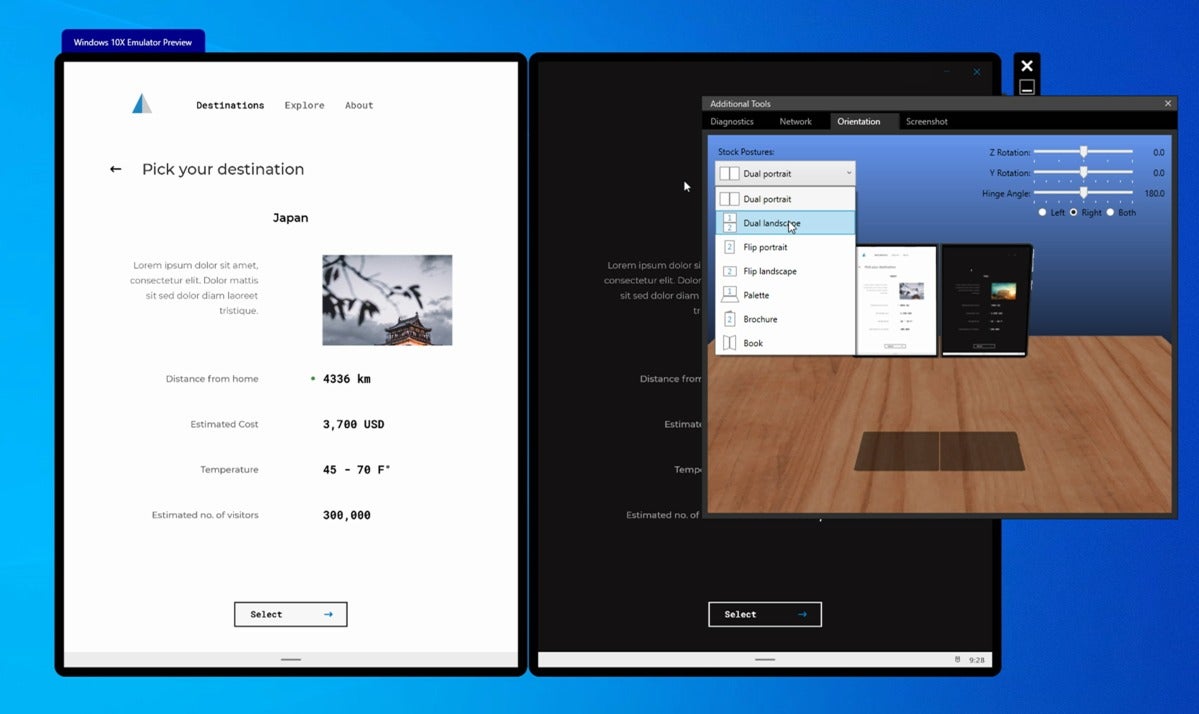 Microsoft
Microsoft
Developers will be able to try out this Windows 10X emulator from Microsoft.
App updates will be incremental
You’ll see some improvements in app updates, too. John Vintzel, the program manager lead for Microsoft, said that one advantage of a new MSIX app packaging container will be that all of the app’s resources will be contained within it, each with its own unique software hash. In fact, there will be three containers: native containers for UWP apps, which will offer the best performance as well as battery life; the MSIX containers, which will offer high compatibility with existing apps and a robust installation / uninstallation procedure; and the new Win32 container, which we'll discuss in a bit.
When a new app is downloaded, the hashes of each of the components will be compared against the update. If a particular component (say the app icon) is left unchanged, it won’t be downloaded and updated, saving bandwidth. But even if a component is downloaded, it will be divided up into blocks, and only those blocks that have been changed will be downloaded. Even better, those blocks can be downloaded and then merged with the app later on, taking care of the process in the background.
It sounds like this same approach will be used to patch the Windows 10X OS, too. The secondary patched OS will be constructed from just what’s new, saving you from re-downloading the entire OS every time a patch is released.
Farewell, registry cleaners
The UWP apps within Windows 10X, incidentally, will only be able to access certain libraries. Photos would just be able to access your Photo library, for instance, just as UWP apps behave within Windows 10. “Apps can interact with the OS, but only via a clear set of APIs,” Clinick said.
“No more registry fiddling to optimize the OS,” Clinick added. “And my personal favorite, no more registry cleaners.”
Say goodbye (again) to “bit rot”
Microsoft promised this with Windows 10 S, and it’s making the same pledge again with Windows 10X: Because the initial code and subsequent OS and app updates will be clean and tidy, you shouldn’t see “bit rot,” the degradation of performance that often accompanies a PC over years of operation.
“We’re going to have sustained performance, ensuring the performance you see on day one stays with you for the lifetime of the machine,” Clinick added. “That’s so important. Because last time I checked processes don’t get slower, the more you use them.”
The Win32 Container: How legacy apps are supported in Windows 10X
How Windows 10X deals with legacy Win32 apps is one of the most fascinating parts of Windows 10X, and it builds upon a number of the other components we’ve already mentioned. Basically, Windows 10X will support most legacy Win32 apps, and it will do so by stealing a few tricks from Microsoft’s secret sauce: virtualization.
Every app within Windows 10X runs within its own container—intended to protect the OS from potential malware. But the Win32 Container exists separately, as a large vault of sorts for legacy Win32 code. (MSIX Containers will run inside the Win32 Container -- yes, as a container insider a container, too.) Inside the Win32 Container runs all of the legacy Win32 apps that you may want to keep around: system utilities, old games, and the like. There’s even a traditional Windows directory tree, and its own kernel, drivers, and registry.
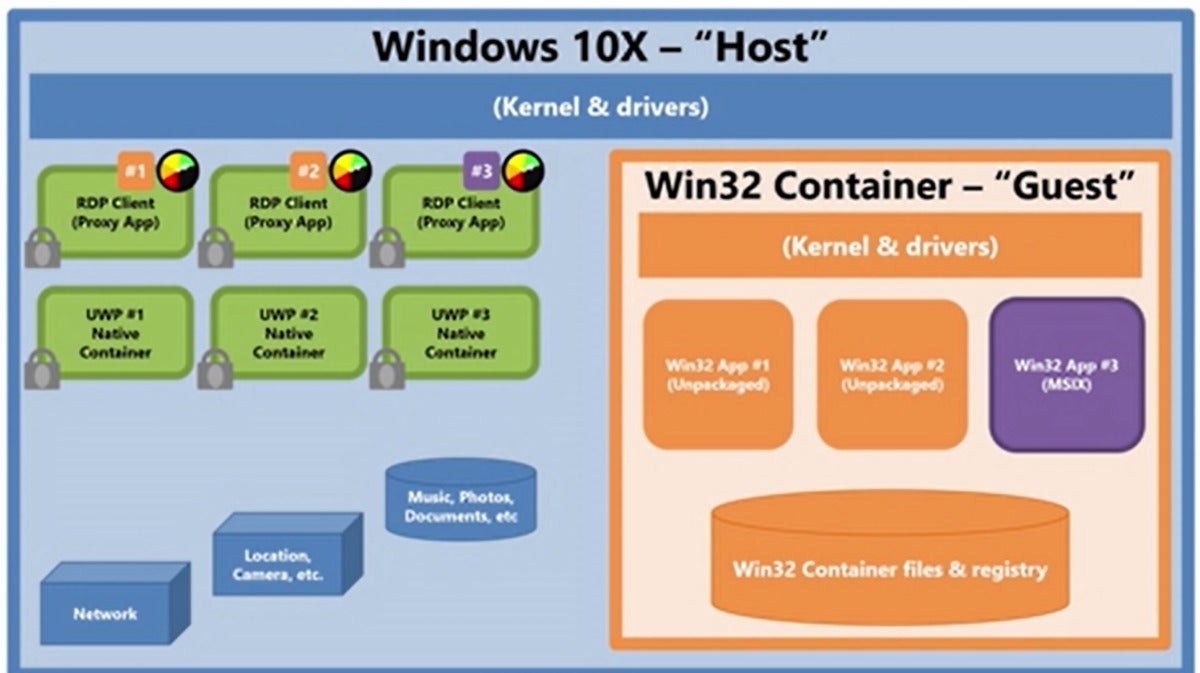 Microsoft
Microsoft
A diagram of what the Win32 container looks like inside the Windows 10X host.
The Win32 Container is essentially a virtual machine, though with higher integration, much lower latency, and with access to more resources on the host Windows 10X than a VM has. Together, it all offers greater overall performance, according to Peter Torr, a principal program manager at Microsoft.
But opening the Win32 app within Windows 10X doesn't actually launch it directly. Instead, what Windows 10X does is create “proxy” apps within the Windows 10X host operating system—essentially, using a Remote Desktop-like interface to access the secured Win32 app within the Win32 Container. Microsoft promises you’ll have near-native performance of these apps, but some sort of slowdown would seem likely.
Privacy within Win32 apps
There will be a few bumps along the way. While all “typical” PC hardware—mice, keyboards, pens, touchscreen, printers, networking devices—should work as expected within Windows 10X, there will be limitations on “non-standard hardware” and “app-installed drivers,” Microsoft says. Microsoft’s also putting some broad limitations on what it’s calling “privacy-sensitive hardware,” such as the camera and microphone. In this case, all Win32 apps will have access to the mic, or none will; there are no per-app permissions, Torr explained.
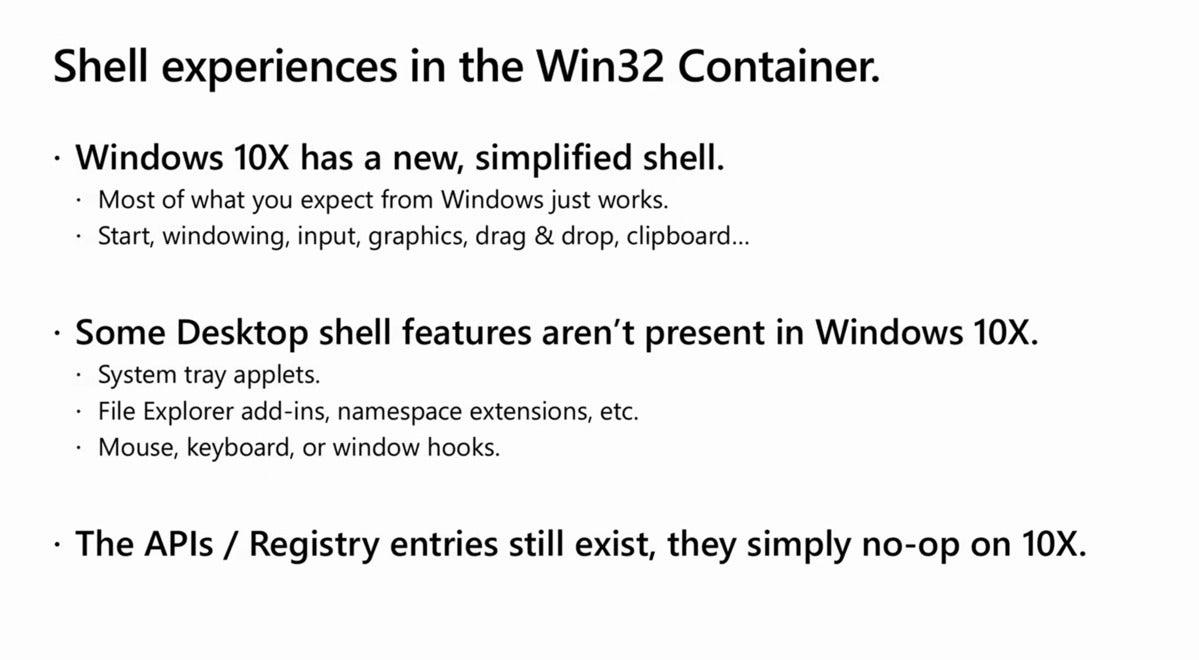 Microsoft
Microsoft
Some of the limitations of Win32 apps within Windows 10X.
Torr listed other limitations to Win32 apps in Windows 10X: No system tray applets will be allowed, and you won’t be able to use File Explorer add-ins or namespace extensions, for example. If there’s an app or utility that you interact with via the system tray, it’ll have to move elsewhere within Windows 10.
There’s a lot here already, and it’s only February. Expect to hear more about Windows 10X as 2020 progresses, including at Microsoft’s Build 2020 conference in late May.





